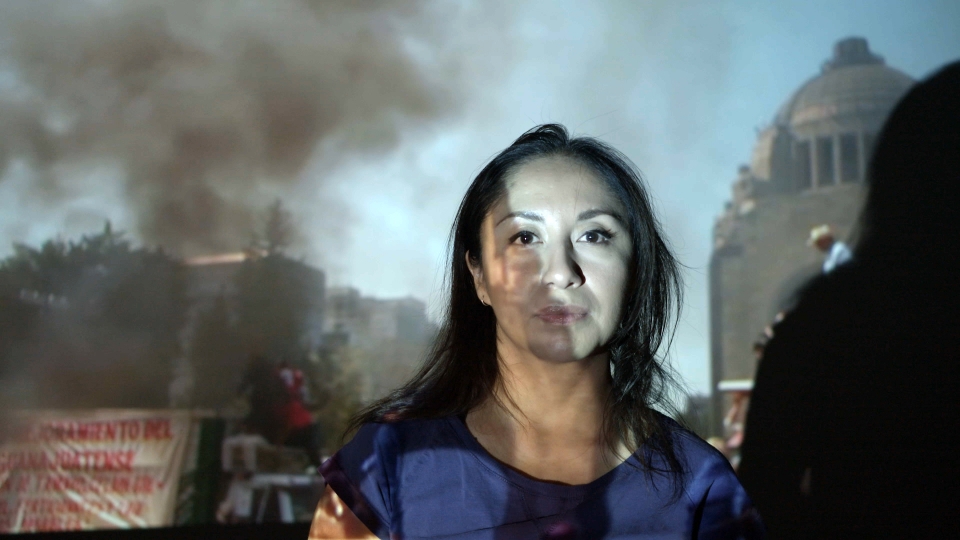See more of Minerva Cuevas’ work in her slideshows on art21.org.
Minerva Cuevas was born in Mexico City in 1975. A conceptual and socially-engaged artist, she creates sculptural installations and paintings in response to politically-charged events, such as the tension between world starvation and capitalistic excess. Cuevas documents community protests in a cartography of resistance while also creating mini-sabotages—altering grocery store bar codes and manufacturing student identity cards—as part of her non-profit Mejor Vida Corp / Better Life Corporation.
Several of the artist’s works take the form of re-branding campaigns—exhibited as murals and product designs—that question the role corporations play in food production, the management of natural resources, fair labor practices, and evolving forms of neo-colonialism. Cuevas finds provocative ways to intervene in public space, whether through the deployment of billboards and posters, or by hacking public utilities to provide discounted or free services. Cuevas addresses the negative impact that humans have on animals and the environment through sculptures coated in tar and tender paintings of animal rights activists, imagining a society that values all living beings.
In the following preview from the Mexico City episode of Season 8 of Art in the Twenty-First Century, Cuevas shares the inspiration behind her 2015 exhibition at kurimanzutto, feast and famine. “[It is] very much a reference to the capitalist system—considering the whole capitalist system as a cannibalistic process,” says the artist.
Season 8 of Art in the Twenty-First Century premieres Friday, September 16, 2016 at 9 p.m. on PBS. Mexico City airs September 16th at 10 p.m.
